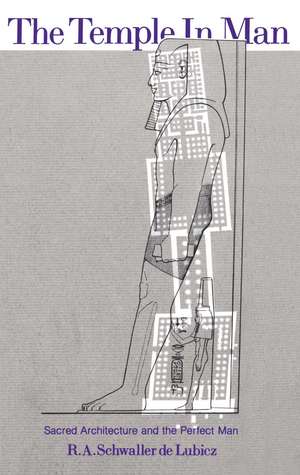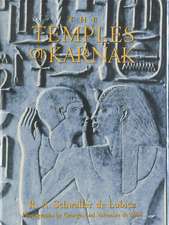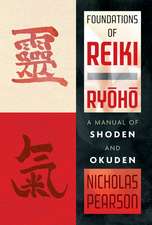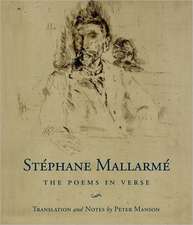The Temple in Man: Sacred Architecture and the Perfect Man
Autor R. A. Schwaller de Lubicz Ilustrat de Lucie Lamyen Limba Engleză Paperback – noi 1981
Preț: 55.24 lei
Preț vechi: 74.38 lei
-26% Nou
Puncte Express: 83
Preț estimativ în valută:
10.57€ • 10.100$ • 8.73£
10.57€ • 10.100$ • 8.73£
Carte disponibilă
Livrare economică 28 martie-09 aprilie
Livrare express 08-14 martie pentru 37.35 lei
Preluare comenzi: 021 569.72.76
Specificații
ISBN-13: 9780892810215
ISBN-10: 0892810211
Pagini: 136
Dimensiuni: 152 x 229 x 15 mm
Greutate: 0.2 kg
Ediția:Original
Editura: Inner Traditions/Bear & Company
Colecția Inner Traditions
ISBN-10: 0892810211
Pagini: 136
Dimensiuni: 152 x 229 x 15 mm
Greutate: 0.2 kg
Ediția:Original
Editura: Inner Traditions/Bear & Company
Colecția Inner Traditions
Notă biografică
R. A. Schwaller de Lubicz (1887-1961) was one of the most important philosophers, mathematicians, and Egyptologists of this century. His elucidation of the temple at Luxor and his presentation of the Egyptian understanding of a special quality of innate consciousness form a bridge that links the sacred science of the Ancients to its rediscovery in our own time.
Cuprins
The Temple in Man
Sacred Architecture and the Perfect Man
Translator's Foreword
Preface
Introduction
Definitions
Chapter I. A Hypothesis and It's Evolution
Chapter II. Significance of the Crown of the Skull
Chapter III. Reflections on a Philosophy of Measure
Chapter IV. The Plan
Chapter V. Orientation
Chapter VI. The Temple in Man
Chapter VII. The Crossing: Egyptian Mentality
Chapter VIII. The Egyptian Canon for a Standing Man
Conclusions
Sacred Architecture and the Perfect Man
Translator's Foreword
Preface
Introduction
Definitions
Chapter I. A Hypothesis and It's Evolution
Chapter II. Significance of the Crown of the Skull
Chapter III. Reflections on a Philosophy of Measure
Chapter IV. The Plan
Chapter V. Orientation
Chapter VI. The Temple in Man
Chapter VII. The Crossing: Egyptian Mentality
Chapter VIII. The Egyptian Canon for a Standing Man
Conclusions
Descriere
This book contains the first published results of Schwaller's 12 years of research at the temple of Luxor and its implications for interpreting the symbolic and mathematical processes of the Egyptians through their sacred architecture.
















